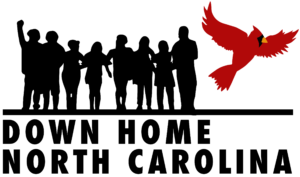I once had a boss who would send me Suze Orman articles. I was in my late 20s, a single mom with just one income, and he knew money was tight. I graciously accepted the articles, but never read them: Financial planning for me consisted of just paying my bills the best I could.
Most families don’t have the luxury of savings and certainly not of investing. The Federal Reserve reports that 39% of Americans don’t have enough money on hand to cover even a $400 emergency (2019). Most of us know what it’s like to live one paycheck away from disaster. We live in a world where a sick child can make you lose wages and a bad alternator can cost you your job.
The pandemic laid it all bare. At Down Home North Carolina, we spent the early days of COVID distributing mutual aid funds so that people could buy simple safety provisions such as Clorox wipes, disposable masks, and other items to keep their families safe. One woman was grateful for the $25 because she worked at a grocery store and said it was hard to ring up customers who were buying all the supplies when she would have to wait until her next paycheck to afford a half gallon of bleach.
The disintegration of the working-class predates the pandemic. For decades, wage gains have mostly flowed to the highest-paid tier of workers, and those of us who find ourselves towards the middle or bottom have only experienced stagnation. I worked for many years at a regional food bank where 160,000 people sought food assistance annually, but their stories were overwhelmingly the same: “I work hard but my paycheck goes to my housing and light bill; what’s left over isn’t enough to buy food.”
So while we haven’t been saving and investing like Suze Orman might want us to, working-class families know a thing or two about budgeting. We know how to pinch a penny, but we also know there are times we have to spend a dime. I was taught to always change my oil even if money was tight because neglect would cost a whole lot more.
Our government needs to make an investment into poor and working families or the engine of our economy is going to seize.
Right now, the Build Back Better agenda is our best bet for making these long overdue investments into both our physical and human infrastructure. Like the New Deal of 1930s, Build Back Better could right-size what has gone wrong over this era of uninhibited corporate growth. It would bring living wages to care worker jobs and reduce childcare costs for working parents like me. It would give everyone access to two years of free community college and make huge investments into schools, teachers, and affordable housing. From roads and bridges to family leave and carbon emissions, the Build Back Better agenda’s reach is wide and broad and it needs to be. It took decades of defunding and austerity to get us here, and without some basic care we are going to break.
A booming stock market is evidence of how lopsided we have become. Corporate profits are soaring and U.S billionaires got 62% richer during the pandemic while COVID swept down their assembly lines and while my neighbors lost their jobs (US Commerce Department, August 2021). Instead of using these profits to pay their workers more, corporations are spending millions to avoid doing their part. 65% of Americans want to tax big companies to foot the bill for Build Back Better, just like we have been footing the bill for their profits all along (Morning Consult Poll, April 2021). This is why the ultra wealthy and corporate lobbyists are working so hard to defeat Build Back Better. They don’t want a foundational shift; they want things to stay exactly the same.
But we need the change. I recently asked Down Home members what parts of Build Back Better would impact them the most. “My prescription prices would go down.” “I could return to school and get a better job.” “I could take time off to help my mother after surgery.” “The road up to my house would be repaired.” When I think about my family, when I think about my neighborhood, when I think about all the people I have met across North Carolina, I cannot think of one person who would not benefit from this investment. That’s why an overwhelming majority of Americans, independents, and even four-in-ten Republicans back the Build Back Better plan in full (Navigator Research, September 2021).
Will we win? I do not know. The corporate lobby is strong and has money that we will never have. But on the flip side unchecked corporate wealth has created such a lopsided system that numerically there sure are a lot of us down here. It’s likely that this month will be the month where we will see who our elected officials answer to.



